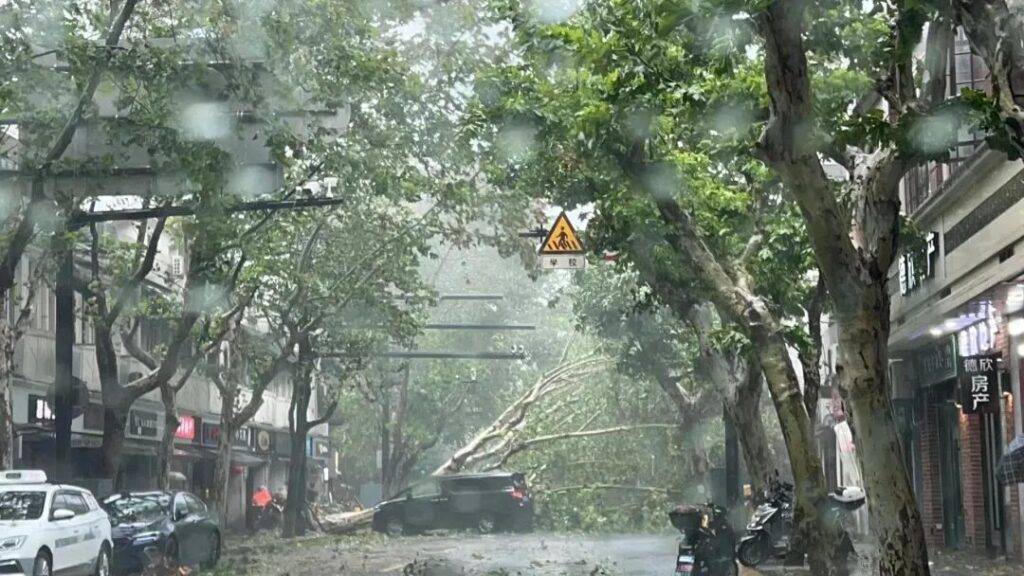
On September 15, 2024, Typhoon Bebinca made landfall in Shanghai, marking the most powerful storm to hit the city since 1949.
This Category 1 typhoon brought with it unprecedented challenges and disruptions, affecting millions of residents and causing significant damage.
In this blog post, we will explore the impact of Typhoon Bebinca on Shanghai, the measures taken by authorities, and the broader implications for the city’s infrastructure and future preparedness.
The Arrival of Typhoon Bebinca
Typhoon Bebinca struck Shanghai with wind speeds reaching up to 151 kilometers per hour (94 miles per hour) near its eye.


The storm made landfall at approximately 7:30 AM local time, bringing heavy rainfall and strong winds that battered the city. Shanghai, a financial hub with a population of nearly 25 million, rarely experiences direct hits from such powerful typhoons, making this event particularly noteworthy.
Immediate Impact and Response
The immediate impact of Typhoon Bebinca was felt across Shanghai. Authorities took swift action to mitigate the damage and ensure the safety of residents. Key measures included:
- Flight Cancellations: Hundreds of flights were canceled from Shanghai’s two main airports, causing significant travel disruptions.
- Railway Suspensions: Some rail services were suspended to prevent accidents and ensure passenger safety.
- Evacuations: Approximately 9,000 people were evacuated from the Chongming District, an island at the mouth of the Yangtze River.
- Tourist Site Closures: Popular tourist destinations such as Shanghai Disney Resort and Jinjiang Amusement Park were temporarily closed.
Infrastructure and Preparedness
Shanghai’s infrastructure faced a severe test during Typhoon Bebinca.
The city’s drainage systems were put to the test as heavy rainfall led to localized flooding in some areas.


The storm also highlighted the importance of robust infrastructure and emergency preparedness in urban centers.
Lessons Learned and Future Preparedness
The impact of Typhoon Bebinca underscores the need for continuous improvement in disaster preparedness and response strategies.
Key lessons include:
- Enhanced Early Warning Systems: Investing in advanced meteorological technology to provide timely and accurate warnings can help mitigate the impact of future storms.
- Infrastructure Resilience: Strengthening infrastructure, including drainage systems and building codes, can reduce the vulnerability of urban areas to extreme weather events.
- Community Awareness: Educating residents about emergency procedures and encouraging community participation in disaster preparedness can enhance overall resilience.
Conclusion
Typhoon Bebinca’s landfall in Shanghai serves as a stark reminder of the power of nature and the importance of preparedness.
As the city recovers from this historic storm, the lessons learned will be crucial in building a more resilient and safer Shanghai for the future.


